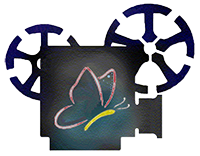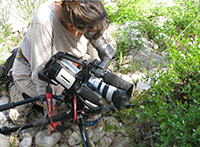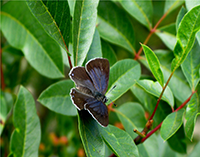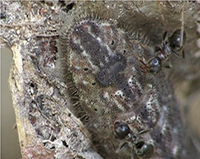


The Spanish Purple Hairstreak (Laeosopis roboris Esper, 1793)
The life-cycle, the behavior of the butterfly and caterpillars, the courtship-ship, mating, the egg-laying the egg hatching, the larval food-plant, the myrmecophily caterpillars and the ants Lasius niger and L. cinereus and the different host-plants (Phillyrea latifolia, Phillyrea angustifolia, Fraxinus angustifolia) of the butterfly the Spanish Purple Hairstreak has been filmed in the Var, France. During spring 2009, caterpillar from Laeosopis roboris feeding on Phillyrea latifolia and Fraxinus angustifolia were visited by the ants Lasius niger (Linné, 1758) and L. cinereus (Seifert, 1992) attracted by the dorsal nectar organ (DNO).
(= L. evippus Hübner, 1793)

![]() La vie secrète de Laeosopis evippus (Hübner, 1793)
La vie secrète de Laeosopis evippus (Hübner, 1793)![]() The Secret Life of Laeosopis evippus (Hübner, 1793)
The Secret Life of Laeosopis evippus (Hübner, 1793)
Translated into English by Mo Scott.The photos are available in the original french paper.
Abstract
Little is known about the ecology and biology of the Spanish Purple Hairstreak (Laeosopis evippus).. It was found that the most important host plant wasn't the ash tree but in fact two species of Phillyrea (P. latifolia and P. angustifolia). Most of the eggs were found less than 20cm from soil level. Once hatched the caterpillars are surrounded by and cared for by ants (Lasius niger and Lasius cinereus).
[ Fr ] Exceptional heavy rainfall of June 15th, 2010, during the peak of flight period of the population shown in the documentary, the zone was submerged and decimated the population.
![]() 15-Juin-2010 - Pluies torrentiels dans le Sud-est de la France formant des crues exceptionnelles
15-Juin-2010 - Pluies torrentiels dans le Sud-est de la France formant des crues exceptionnelles
Lasius niger & L. cinereus attracted by Laeosopis roboris
